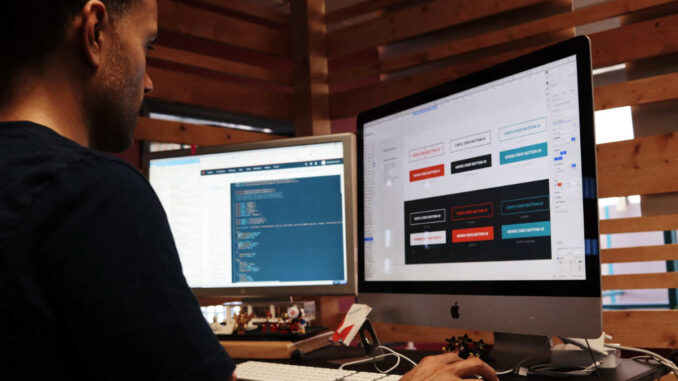
A lot has changed over the past couple of years, and as we will see next, those same trends are expected to enter their next stage of evolution over the next 12 months. Let’s get straight to it then.
Core Web Vitals Will Become a Crucial Aspect of Designing the Page UX
Aspects of a website’s design that affect the user experience (UX) the most are listed and termed collectively as Core Web Vitals by Google (CWV) in their Page Experience. CWVs are used to determine a page’s Google UX score and that score plays a big role in determining the website’s SERP rankings. Consider them to be quite similar in some ways to business benchmarking, but only for your digital platform instead. Check the metrics discussed next to understand what web designers will need to concentrate on for building a SEO-friendly site over the next 12 months.
Largest Contentful Paint (LCP)
This is a metric that measures the loading and rendering time taken by a page’s largest blocks of content and/or media before appearing in full, on the user’s viewport. LCP measurements start right from the moment a user clicks/taps on the webpage or the SERP. The LCP and the CWVs are just a few examples of what’s coming and there is a lot more that will tie web designing and search engine optimization (SEO) closer together.
You must have a website that doesn’t just look cool, but also produces results by taking in the latest changes in Google’s User Experience Update. You also need to make sure your website is ‘SEO friendly’ and factors Google’s new metrics dedicated towards measuring a website’s UX performance.
First Input Delay (FID)
Like LCP, FID is also a metric that measures page loading speeds, but it goes much deeper. First input delay is measured by calculating the time various options take to respond to a customer’s interactions with them. For example, if you search for a product on an eCommerce website, FID is the metric that collects information on how much time the site took to display the search results to you.
Cumulative Layout Shift (CLS)
The CLS metric measures the visual stability of a webpage. It measures how much the different elements on the website move around on their own while loading. Radical shifts in size and content, sudden and visually jarring changes to the design, glitches, out of viewpoint scaling, etc. will plummet your site’s cumulative layout shift score. As a more immediate negative effect, the constantly shifting web format will likely result in unwanted interactions from the customer, after which the customer will leave immediately in the vast majority of such instances.
Websites will be Designed in Darker Themes and Colours
Most apps had already started to offer their UI in dark mode, and Google itself has adopted the dark mode across all its services. There are still some kinks that need to be ironed out, but most major websites and applications have started to offer dark modes to their users.
Over time, web designers will likely fade out the differences between dark and light mode. Instead, most sites will be rehashed in a darker theme. All that will not happen at once of course, but the trend of designing websites in darker colour schemes will become more popular for sure.
It should be noted that this is not a trend that is likely to fizzle out at all, because the popularity of dimmer webpages is not based on just a passing preference for contemporary style. There are some very practical reasons as to why your web design agency might suggest a darker theme. For example:
All surveys point to the fact that a dark webpage with brighter fonts is far more likely to be read than a traditional white page with darker fonts. Both depend on the creation of contrast between the background and the foreground, but darker themes allow for better visibility and better contrast, without the harshness of a bright white light.
What next
This is not the comprehensive list of all web design trends which are to be expected over the next year or so, but these are the most prominent ones at the moment. More trends will emerge, of course, but we may have to wait until a little longer to be absolutely sure.

Leave a Reply